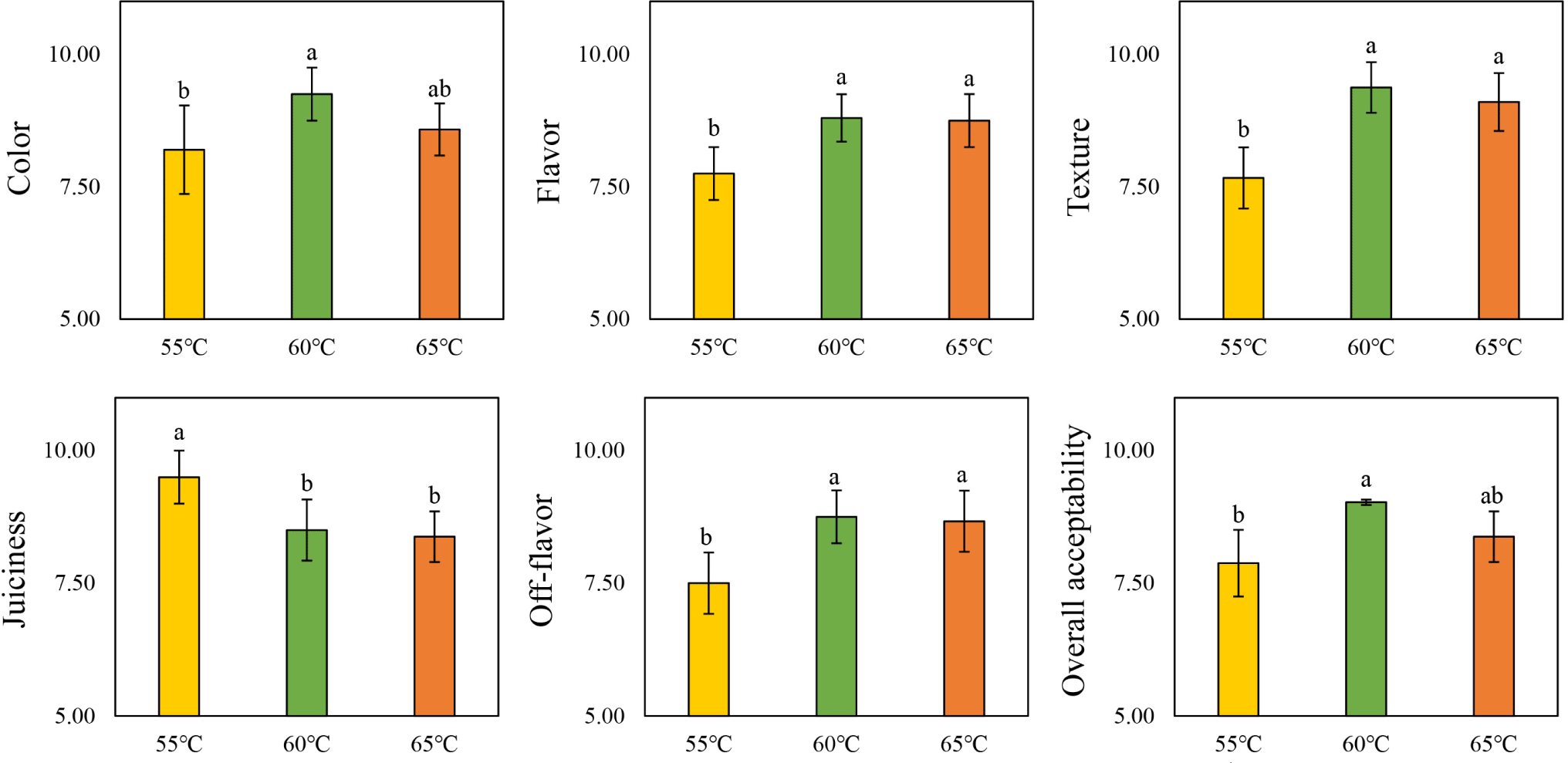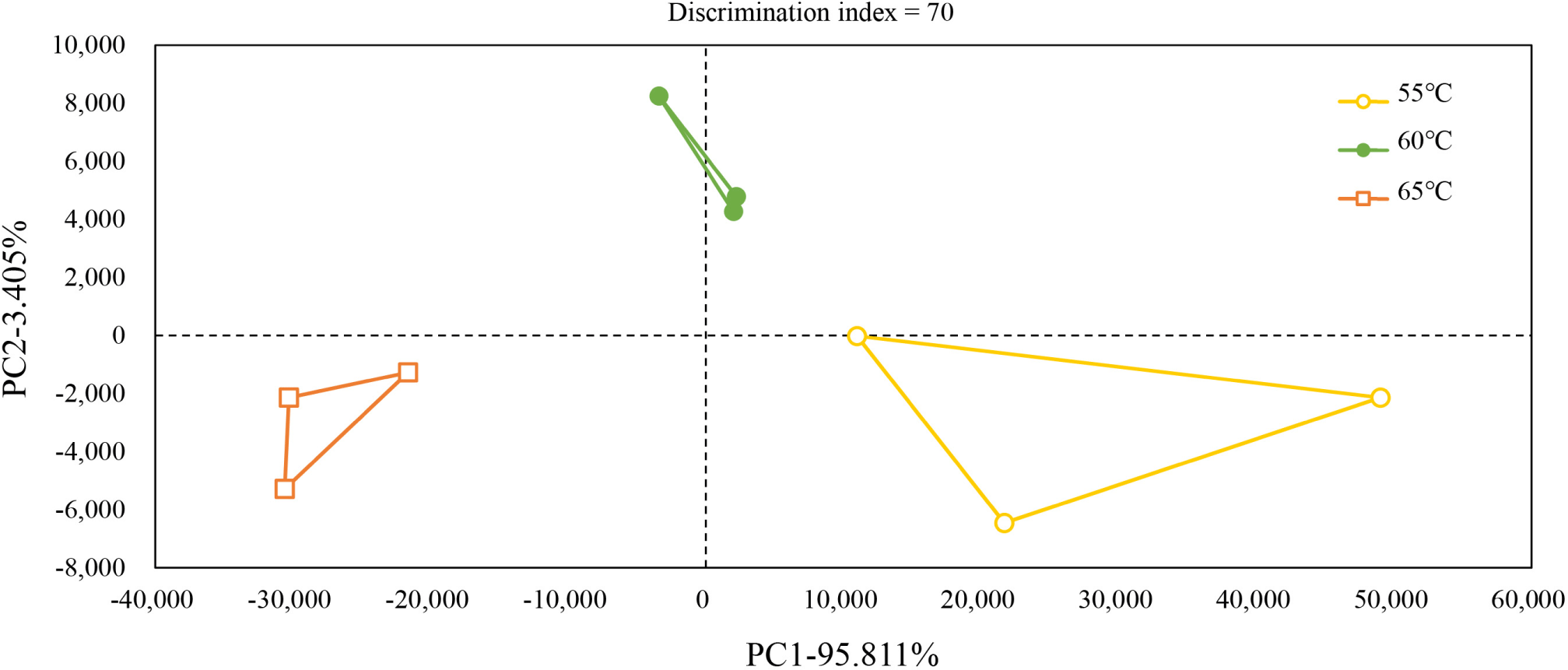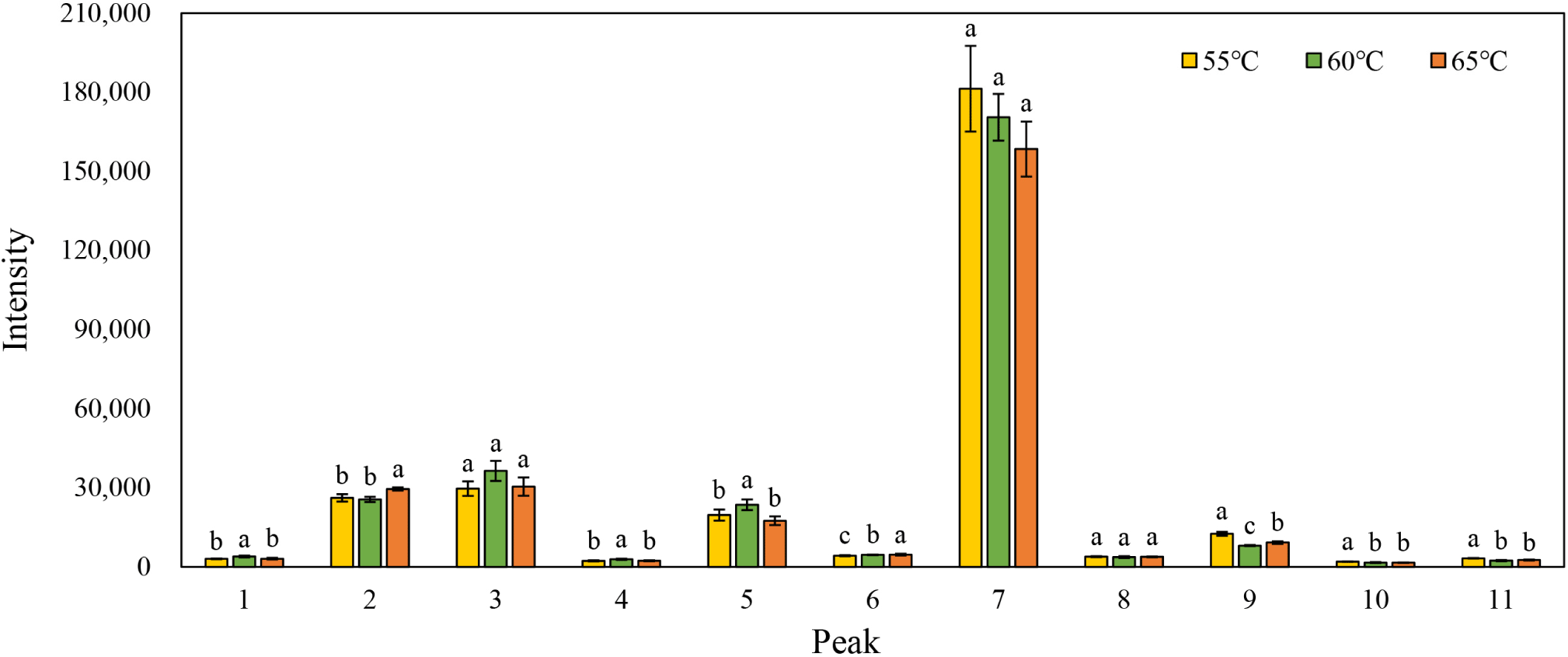Introduction
Goats (Carpra hircus) are ruminant livestock that produce a variety of consumer products, such as meat, milk, hides, and cashmere (Gu et al., 2022). Moreover, as the Asian population has increased, the consumption of goat meats is also increased and this phenomenon is considered to present a great opportunity for the continuous growth of goat meat demand (LaRoche et al., 2022). Black goats (Capra hircus Linnaeus) are generally raised in warm climate regions such as South Asia, Africa, and South America (Guan et al., 2016). Black goats can be raised in rough terrains such as mountainous terrain, and the high efficiency of fibrin decomposition in the rumen aid the utilization of tough and low-nutrient grasses, which are available (Chung et al., 2021; Nair et al., 2021). In addition, compared to other main meat resources, there are no religious restrictions; they have similar protein content and higher content of unsaturated fatty acids and iron; thus, their potential value as a meat resource is superior (Lalhriatpuii and Singh, 2021).
The main reasons for the low consumption of black goat meat are its peculiar off-flavor and tough texture (Rhee et al., 2003). Especially its peculiar off-flavor is influenced by the goat meat’s volatile composition and this impacts the olfactory attributes that consumers readily associate with goat meat (Adam, 2022). Off-flavor and tenderness affect consumer preference and are properties that are mainly improved in meat (Font-i-Furnols and Guerrero, 2014). Accordingly, various processing methods have been studied to improve the flavor and tenderness of meat (Gómez et al., 2020). Sous-vide cooking is a trendy meat processing method that improves flavor and tenderness by pretreating vacuum-packed meat in low-temperature boiling water (Kathuria et al., 2022). Through sous-vide cooking, the tenderization of meat has been attributed to the retention of water, reduced denaturation of proteins, and weakening of connective tissue by collagen solubilization (Naqvi et al., 2021b). Therefore, in this study, we aimed to determine the effect of sous-vide cooking temperature on black goat meat to reduce its off-flavor and improve tenderness.
Materials and Methods
The triceps brachii of black goats’ meat (Capra hircus Linnaeus, breed: black Korean goat×boer goat, 12 months) refrigerated for 24 h after slaughter were purchased from Gaon (Gangjin, Korea). The triceps brachii were cold transported to the laboratory within 10 h and used after getting rid of unnecessary tissue (connective tissues and excessive fat) on the muscle surface. For experiment, triceps brachii were collected from 15 carcasses, severed at 190–210 g, and then grouped into three groups with vacuum sealing. They were randomly cooked each at 55°C, 60°C, and 65°C water bath for 90 min. The sous-vide cooking temperatures were determined according to the study of Ismail et al. (2022). After cooking, the samples were cooled in an ice bath for 20 min and used in the experiments.
The core cutting surfaces of the samples were determined using a colorimeter at room temperature. Subsequently, the parameters of CIE L*, CIE a*, and CIE b* were recorded prior to sample measurements. Hue angle and chroma values were computed by applying the following formula:
The colorimeter was adjusted to operate with a pulsed xenon lamp as a default light source, 2° standard observer, aperture of 8 mm, and illuminant D65. The white plate (CR-10, Minolta, Tokyo, Japan) with the following color values: CIE L*: +97.83; CIE a*: –0.43; and CIE b*: +1.98 was used for calibration of the colorimeter.
The samples were cut, based on the orientation of muscle fiber, on flat surface (1×1×1 cm3) and stored at –85°C deep freezer. The frozen samples were sliced into 10 μm at –25°C using a cryostat cryocut microtome (CM3050S, Leica, Wetzlar, Germany), and the sarcomere length and microstructure were then observed using a high-resolution field emission scanning microscope (MIRA3-LM, Tesan, Klíčany, Czech Republic). The fiber cross-sectional area was observed using a laser confocal scanning microscope (ZEISS LSM 800, ZEISS, Jena, Germany).
The cooking yield of the samples was analyzed by weighing the samples before and after cooking. Samples’ cooking condition was convection, 60 min, with core temperature 72±1°C and cooked samples were cooled at room temperature for 20 min. The cooking yield was computed from these weights by applying the following formula:
The shear force was analyzed with cube-shaped samples (sample size: 1×1×1 cm3) utilizing a texture analyzer (TA 1, Lloyd, Largo, FL, USA). The analysis conditions of the machine were as follows: V-blade with a distance of 22.0 mm; test speed of 21.0 mm/s; a head speed of 21.0 mm/s; a force of 5.6 N. Analyzed values are presented in Newton (N).
The sensory evaluation method employed in this study received approval from the Ethics Committee of Kongju National University (Authority IRB No: KNU 2021-75). The twenty panelists were trained to acquaint themselves with the goat sous-vide sensory properties. The training progressed for 12 d (1 h session per day) with goat meat which is commercially available. After training, the panelists carried out the scores of samples’ sensory evaluation using a 10-point descriptive scale (Table 1).
Aroma profiles of the samples were obtained using a Heracles II electronic nose (Alpha MOS, Toulouse, France). The conditions of the machine for the analysis were as follows: 5 g of sample weighed in a 20 mL vial; headspace temperature of 60°C; flow rate of 250 mL/min; acquisition time of 120 s; an injection of 2.5 mL of sample. For the principal component analysis (PCA) procedure, the measured sensitivity values were processed with the Alpha software (Alpha MOS). The analyzed aroma profiles were classified, patterned, and recorded as the primary component value (PC1) and secondary component value (PC2).
All experimental data in this study were analyzed after a minimum of three repeated trials and the results are expressed as mean, SD, and standard error of the means (SEM). Statistical analyses were verified using one-way analysis of variance (ANOVA) and Duncan’s multiple range tests in the SAS program (version 9.3 for window, SAS Institute, Cary, NC, USA) at a significant level of p<0.05. The study employed the General Linear Model of ANOVA to assess potential differences in color, fiber cross-sectional area, sarcomere length, cooking yield, shear force, sensory evaluation, and aromatic profile measurements of the triceps brachii muscle in black goats subjected to various sous-vide temperatures.
Results and Discussion
Table 2 shows the color values of the triceps brachii of black goats at various sous-vide temperatures. The CIE L* of the 60°C sample was significantly higher than that of the other samples (p<0.05). Alahakoon et al. (2018) reported that decreasing trends in CIE L* of beef muscle were observed in the temperature range of 60°C, 65°C, and 70°C, which is similar to our results. The high sous-vide cooking temperature that inflicts on the protein, increases the protein denaturation process and this process causes the increase of CIE L* (Hasani et al., 2022). However, Ismail et al. (2022) reported that changes in CIE L* are affected by many factors such as muscle type, pH, cooking time, free water, temperature, etc., and that causes lots of varied results that conclude meaningless predict changes in CIE L*. The CIE a* and CIE b* of the 65°C sample were significantly higher than those of the other samples (p<0.05). As the thermal process progresses, myoglobin, a pigment protein, starts to denature at temperatures between 55°C and 65°C (Noh et al., 2023). With increasing temperature, denaturation continues to escalate. The denaturation of myoglobin starts at over 60°C and color properties change to gray-ish-dull brown at 65°C (Ismail et al., 2022). The hue angles of the 55°C and 60°C samples were significantly higher than that of the 65°C sample (p<0.05). The chroma of the 65°C sample was significantly higher than those of the other samples (p<0.05). Hue angle and chroma are influenced by CIE a* and CIE b* and have a correlation (Sun et al., 2019). In sous-vide cooking, myoglobin undergoes slow denaturation because of the absence of oxygen during heating; hence, most muscle fibers exist in the form of deoxymyoglobin (Modzelewska-Kapituła et al., 2022).
| Traits | 55°C | 60°C | 65°C | SEM | |
|---|---|---|---|---|---|
| Color | CIE L* | 52.58b | 55.18a | 50.24c | 0.57 |
| CIE a* | 5.42b | 5.78b | 7.82a | 0.29 | |
| CIE b* | 9.16c | 10.12b | 10.78a | 0.20 | |
| Hue angle | 59.41a | 60.27a | 54.02b | 0.77 | |
| Chroma | 10.65c | 11.65b | 13.32a | 0.31 | |
Fig. 1 shows a scanning electron microscope (SEM) photograph of the triceps brachii of black goats at various sous-vide temperatures. As shown in Fig. 1, the intensity of the myofibrillar microstructure collapse increased with increasing temperature, corroborating the research by Yin et al. (2020) who reported that the intensity of sarcomere structure collapse increases with increasing temperature in sous-vide cooked beef semimembranosus. The changes in sarcomeres into the wavy formation may be due to vacuum and temperature which brings irreversible changes in the structure of the I-bands (Chian et al., 2021a). Conformational changes such as general denaturation with shrinkage in structural proteins, such as titin, perform a role in the structural integrity of myofibrils during heating, which may be one of the reasons for the observed collapse of the myofibrillar structure (Zhu et al., 2018). Furthermore, the activity of endogenous proteolytic enzyme is encouraged by warmer temperatures and it breaks down the myofibrillar structure faster and finally makes the texture softer (Uttaro et al., 2019). As the results shown, at a temperature of 60°C or above, both longitudinal and transverse shrinkage of muscle fibers occur and these can affect the texture profiles of meat in a positive way.

Table 3 shows the fiber cross-sectional area, sarcomere length, cooking yield, and shear force of the triceps brachii of black goats at various sous-vide temperatures. The muscle fiber cross-sectional area of the 60°C sample was significantly lower than those of the other samples (p<0.05). This result is in agreement with that of Supaphon et al. (2021) who reported that quantitative histological parameters indicated that the fiber cross-sectional area increased with increasing sous-vide heating temperature in the range of 60°C–80°C. The results of the 55°C samples are due to the sous-vide heat not being enough to change the fiber-cross sectional area and it doesn’t show a huge effect compared to the other temperatures (Anne et al., 2022). The fiber cross-sectional area can be measured by the size of perimysium which is the collagen network surrounding muscle fiber bundles (Yamauchi et al., 2014). Perimysium affects the size of the fiber cross-sectional area of meat and involves connective tissue components that affect meat tenderness upon heating (Li et al., 2019). The perimysium strength first increases in the temperature range of 40°C and 50°C and then later increases between 60°C and 80°C (Ismail et al., 2019).
A short sarcomere length can commonly be observed in goat meat and the size of length is average at 1.8 μm and it is the goat species’ own characteristics and similar to before cooked sarcomere length (1.86±0.10) is observed in this study (Gawat et al., 2022). The sarcomere length of the 60°C sample was significantly shorter than those of the other samples (p<0.05). According to Palka and Daun (1999), in sous-vide cooked beef semitendinosus, decreasing sarcomere length has a negative correlation with an increasing temperature range of 50°C–60°C. However, since sous-vide cooking involves cooking uniformly at low temperatures, at 65°C, more time is provided for muscle fibers to relax and elongate (Chotigavin et al., 2023). This low-temperature cooking style can affect positively on toughness of the meat and it is the result of the shrinkage of muscle fibers in a transverse direction (Chotigavin et al., 2022). At 40°C–60°C, the myosin heads and helical tails of the myosin molecules denature, reducing the sarcomere length (Purslow et al., 2016), and the denaturation temperatures of the sarcomere length-associated proteins, such as actin filaments, myosin filaments, and nebulin, are mostly higher than 60°C (Chian et al., 2021b). Therefore, sous-vide cooking at 60°C resulted in the lowest fiber cross-sectional area and sarcomere length because of the incomplete denaturation.
The cooking yield showed a significant decreasing trend as the sous-vide temperature increased (p<0.05). The cooking yield is mainly affected by the temperature of heat process; if meat is exposed to high temperatures, exudation of free water leads to reduced product weight and consequently a reduced yield (Przybylski et al., 2021). This phenomenon is affected by the myofibril, which binds most of the water molecules, and their denaturation by heat releases the water and produces muscle shrinkage and weight loss (Ayub and Ahmad, 2019). In particular, the temperature rise attributed to collagen and actin denaturation takes place above 60°C, resulting in muscle fiber shrinkage parallel to the fiber axis, which exudates the free water present between the fibers (Yahya et al., 2021). However, in sous-vide cooking, because of vacuum packaging, it is difficult to lose free water, thus preventing extreme cooking loss (Yang et al., 2021). Vacuum packaging can prevent the exudation of water in the myofibrillar, and also can prevent the evaporation of moisture converted into water vapor (Baldwin, 2012). These complex reactions effect the cooking yields and show the high advantages of the sous-vide cooking method.
The shear force of the 55°C sample was significantly higher than those of the other samples (p<0.05), corroborating the research by Naqvi et al. (2021b) who reported decreasing shear force value in sous-vide cooked beef semitendinosus when the sous-vide temperature increases. This is attributed to the alteration and denaturation of myofibrillar proteins, primarily in the actomyosin complex and connective tissues (Vaudagna et al., 2002). The alteration of myofibrillar proteins and connective tissues begins at 60°C and increases rapidly up to 80°C (Supaphon et al., 2020). Also, the cooking temperature of 60°C is suitable to activate the proteolytic enzymes such as cathepsin B, cathepsin L, and calpain that degrade myofibrillar proteins (Chotigavin et al., 2023). Furthermore, the loss of water from myofibrillar through heating contributes to meat tenderness and as shown in cooking yield, the results of cooking yield show negative corelations with shear force (Roldán et al., 2013). Considering cooking yield and shear force, sous-vide cooking at 60°C is effective to improve the tenderness.
Fig. 2 shows the sensory evaluation of the triceps brachii of black goats at various sous-vide temperatures. For flavor, texture, and off-flavor, the 60°C and 65°C samples were significantly higher than the 55°C sample (p<0.05). Gil et al. (2022) reported that in sous-vide cooking on meat, 60°C appeared positive effect on sensory evaluation through improving appearance, shear force, thermal loss, and texture profile. Texture is mainly affected by enzymatic denaturation of myosin and collagen and as shown in the results of texture profiles (SEM photograph, fiber cross-sectional area, sarcomere length, cooking yield, and shear force) show similar relations along with sensory evaluation (Mortensen et al., 2012). The flavor of meat cooked sous-vide is primarily influenced by the cooking temperature, with lower temperatures resulting in milder flavors (Naqvi et al., 2021a). Flavor can also differ depending on the type of meat and the composition of their volatile compounds, and the intensity of volatilization of the volatile compounds, which exhibits an unpleasant flavor, directly affects consumer preference (Munekata, 2021). Moreover, as the heating temperature increases, the volatilization of volatile compounds such as fatty acids increases, resulting in a stronger flavor inherent in meat (Roldán et al., 2015).

Electronic nose has sensors to detect volatile compounds to predict flavor score from sensory evaluation and it can determine the differences in flavor deeply (Moschini et al., 2018). Figs. 3 and 4 show the aromatic profiles of the triceps brachii of black goats at various sous-vide temperatures. As shown in Fig. 3, PCA plot performed a PC1 of 95.811% and PC2 of 3.405%, suggests that PC1 played a greater role in augmenting the flavor (Kang et al., 2021). Based on PC1 (x-axis), the PCA plot of each sample revealed a difference in flavor component according to distance. As shown in Fig. 4, the flavor compound peaks for acetaldehyde, ethanol, 2-methylbutane, hexane, 2,3-pentanedione, 1-hexen-3-ol, EDB, cyclohexanone, octadienone, 2-octanol, and undecane were detected in all the samples (peaks numbered 1, 2, 3, 4, 5, 6, 7, 8, 9, 10, and 11, respectively). Octadienone is responsible for metallic aroma characteristics, and it is well known that the stronger the metallic flavor, similar to the blood flavor of meat, the stronger the off-flavor can be felt (Blank, 1997). For peak numbered 9, each sample at 55°C, 60°C, and 65°C showed 12,505.74, 8,027.91, and 9,222.71 of octadienone intensity, respectively with significant differences (p<0.05). These occurrences might be attributed to the synchronized reaction or isomerization of octadienone, resulting in the formation of two cyclic compounds in high-temperature conditions (Yang et al., 2020). These results suggest the score differences in sensory evaluation and indicate electronic nose can scientifically support sensory evaluation. Therefore, sous-vide cooking at 60°C reduced off-flavor in black goat triceps brachii.


Conclusion
In this study, we investigated the effects of sous-vide cooking temperature on the triceps brachii of black goats. CIE a*, CIE b*, and chroma of 65°C samples showed the highest values compared to those of the other samples. In addition, 60°C samples showed advantages in sarcomere length, fiber cross-sectional area, and shear force. Furthermore, according to the results of sensory evaluation and aroma profile, 60°C samples showed high scores of preference owing to the decrease in off-flavor. Therefore, sous-vide cooking at 60°C can improve the tenderness and flavor of triceps brachii of black goats.













